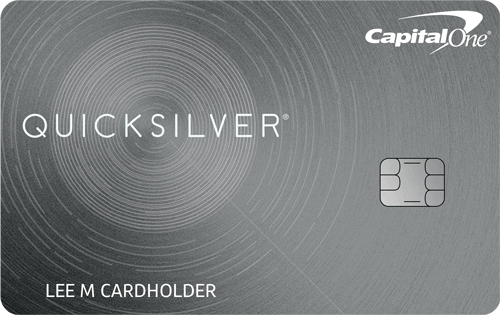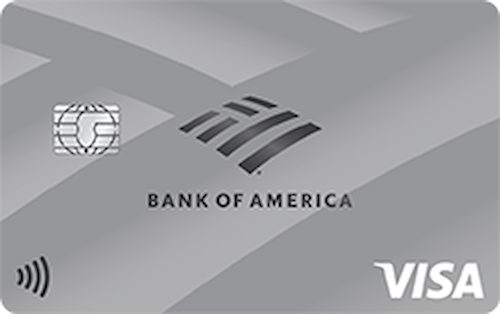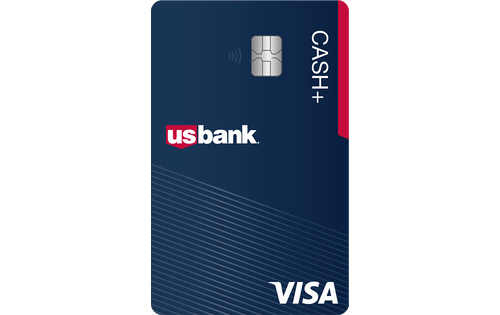- Our picks
- How we picked the best credit cards for bad credit
- Sources
- Beginner's guide
- About the author
- User questions & answers
- Expert opinions
Our picks for the best credit cards for bad credit in 2024
The best credit cards for bad credit are secured cards with no annual fee. That’s true for everyone with poor credit, except people who need a modest emergency loan, because even the best unsecured credit cards for bad credit still charge an arm and a leg for a very small amount of borrowing power.
To help you find the right card for your needs, WalletHub’s editors compared hundreds of offers – both secured and unsecured – and selected the best credit cards for people with bad credit in the most popular categories. Below, you can see how the top cards compare as well as what each is best for.
Best Credit Cards for Bad Credit
| Credit Card | Best For | Credit Score | Annual Fee |
| Discover it® Secured Credit Card | Overall | 300 | $0 |
| Credit One Bank® Platinum Visa® for Rebuilding Credit | No Deposit | 500 | $75 intro 1st yr, $99 after |
| OpenSky® Plus Secured Visa® Credit Card | No Credit Check | 300 | $0 |
| Bank of America® Unlimited Cash Rewards Secured Credit Card | Cash Back | 300 | $0 |
| Bank of America® Customized Cash Rewards Secured Credit Card | Dining/Gas & Groceries | 300 | $0 |
| Capital One Quicksilver Secured Cash Rewards Credit Card (see Rates & Fees) | Uber Credits | 300 | $0 |
If you’re still not sure which credit card will best meet your needs and ultimately take your credit to the next level at the lowest cost, we’ll highlight a notable option from each major credit card company below. That way, you won’t have to worry about missing out because you’ll know what all the big players bring to the table.
Picks by Credit Score
- Best credit cards for 400 credit score
- Best credit cards for 410 credit score
- Best credit cards for 420 credit score
- Best credit cards for 430 credit score
- Best credit cards for 440 credit score
- Best credit cards for 450 credit score
- Best credit cards for 460 credit score
- Best credit cards for 470 credit score
- Best credit cards for 480 credit score
- Best credit cards for 490 credit score
Best Credit Card for Bad Credit by Company
| Credit Card Company | Card Name | Editor's Rating |
| American Express | American Express does not offer credit cards for people with bad credit | N/A |
| Bank of America | Bank of America® Customized Cash Rewards Secured Credit Card | 4.5/5 |
| Barclays | Barclays does not offer credit cards for people with bad credit | N/A |
| Capital One | Capital One Quicksilver Secured Cash Rewards Credit Card | 5/5 |
| Chase | Chase does not offer credit cards for people with bad credit | N/A |
| Citi | Citi does not offer credit cards for people with bad credit | N/A |
| Discover | Discover it® Secured Credit Card | 5/5 |
| First Premier | First PREMIER® Bank Secured Credit Card | N/A |
| Mastercard | Capital One Quicksilver Secured Cash Rewards Credit Card | 5/5 |
| Visa | Bank of America® Customized Cash Rewards Secured Credit Card | 4.5/5 |
| Wells Fargo | Wells Fargo does not offer credit cards for people with bad credit | N/A |
How We Picked the Best Credit Cards for Bad Credit
To select the best credit cards for people with bad credit scores, WalletHub’s editors regularly compare more than 1,500 credit card offers based on factors such as their approval requirements, credit-bureau-reporting practices, and fees. Rewards, interest rates, and security-deposit requirements are also key considerations, directly affecting how much a card saves or costs users.
People with poor credit scores have varying needs and financial circumstances, so WalletHub’s editors select the best cards for different use cases. Although some cards are from WalletHub partners, best-card selections are made purely based on the score each card receives from WalletHub’s Credit Card Rating System. These overall scores reflect a card’s user reviews, editor’s ratings, two-year cost and more. The cards with the lowest two-year cost tend to be the best for bad credit.
How Two-Year Cost Is Calculated
Two-year cost is used to approximate the monetary value of cards for better comparison and is calculated by combining annual and monthly membership fees over two years, adding any one-time fees or other fees (like balance transfer fees), adding any interest costs, and subtracting rewards. Negative amounts indicate savings. When fees or other terms are presented as a range, we use the midpoint for scoring purposes.
Rewards bonuses and credits have been taken into account for two-year cost calculations. However, bonuses applicable to only a very small portion of cardholders are not considered. For example, credits and bonuses awarded for spending or redeeming rewards through a company portal with non-co-branded cards have not been taken into account. Similarly, bonuses and credits related to spending with specific merchants using a non-co-branded card have not been taken into account (for example, if Card A offers credits with DoorDash, this feature would not be factored into calculations because it is hard to assess how many cardholders would use the benefit or exactly how much value they'd get from it).
Cardholder Spending Profiles
Given that different users have different goals and are likely to use their credit cards differently, we identified spending profiles that are representative of different users’ financial priorities and behaviors. For each cardholder type, we have assumed a specific amount of monthly spending by purchase type (e.g., groceries, gas, etc.), as well as an average balance, balance transfer amount, amount spent on large purchases and average monthly payment. Spending assumptions are based on Bureau of Labor Statistics data for consumers.
WalletHub’s Credit Card Rating System
Below, you can see an overview of how cards are scored. For each metric, we provided the criteria for minimum and maximum points. Between the minimum and maximum, points were allocated on a scale determined by our editors for each metric.
Fees
- Annual Membership Fees (2 year average): Cards with $0 in fees receive 10 points, and cards with more than $100 in fees receive 0 points.
- Total One-time Fees: Cards with no one-time fees receive 5 points, and cards with more than $100 in one-time fees receive 0 points.
Rewards
- Ongoing Rewards Value (2-year average): Cards with rewards receive 2 points, and cards with no rewards receive 0 points.
- Two-year Cost (negative amounts indicate savings): Cards projected to save users $150+ receive 50 points, and cards expected to cost users more than $200 receive 0 points.
Interest Rates
- Regular APR: Cards with an APR of 15% or less receive 8 points, and cards with an APR above 30% receive 0 points.
Approval Requirements
- Security Deposit: Cards with no security deposit receive 4 points, and cards requiring a security deposit receive 0 points.
- Minimum Credit Line: Cards with a minimum credit limit of $400 or more receive 3 points, and cards with a minimum limit below $200 receive 0 points.
- Credit Bureau Reporting: Cards that report to all three major credit bureaus receive 8 points, and cards that report to one or fewer bureaus receive 0 points.
Reviews
- WalletHub User Rating: Cards with a 4.5+ rating receive 10 points, and cards with a rating below 2/5 receive 0 points.
Sources
WalletHub actively maintains a database of 1,500+ credit card offers, from which we select the best credit cards for bad credit for different applicants as well as derive market-wide takeaways and trends. The underlying data is compiled from credit card company websites or provided directly by the credit card issuers. We also leverage data from the Bureau of Labor Statistics to develop cardholder profiles, used to estimate cards’ potential savings.
Beginner’s Guide to Credit Cards for Bad Credit
What Is a Credit Card for Bad Credit?
A credit card for bad credit is a card designed specifically for people who’ve made mistakes with borrowed money and now have a credit score below 640. These cards typically have a low spending limit, high fees and interest rates, or a security deposit requirement to offset the risk involved with extending credit to unproven customers. They also report to the major credit bureaus each month, which helps cardholders improve their credit scores as long as they pay the monthly bills on time.
Some credit cards for people with bad credit are much better than others, though. Secured credit cards tend to be the best bet because they are easy to get and many offer surprisingly attractive rewards. Plus, many secured cards don’t charge annual fees.
Learn more about what kinds of credit cards you can get with bad credit.
Secured vs. Unsecured Credit Cards for Bad Credit
| Category | Fully Secured | Partially Secured | Unsecured for Bad Credit |
| Minimum Deposit | $200 | $49 | $0 |
| Minimum Credit Limit | $200 | $200 | $300 |
| Application Fee | $0 | $0 | Up to $95 |
| Builds Credit? | Yes | Yes | Yes |
| Rewards | Yes | No | Rarely |
In most cases, a secured credit card is the best option for someone with bad credit because secured cards are easier to get and much less expensive in the long run than unsecured cards for bad credit. The exception is when you need to borrow money for an emergency expense, since the spending limit on a fully secured card is equal to the amount of your refundable security deposit. A partially secured credit card is one that gives you a spending limit that’s higher than your required security deposit.
Learn more about how secured and unsecured credit cards compare.
What Causes Bad Credit?
Negative information on your credit reports with Experian, Equifax and TransUnion causes bad credit. Negative credit report information is in turn caused by borrowing too much via loans and lines of credit, missing credit and loan payments, and falling significantly behind on other financial obligations.
When you make mistakes as a borrower and don’t repay the lender as promised, they will report you to the major credit bureaus. When enough negative information is reported without enough positive info to balance it out, you get bad credit.
Learn more about what goes on your credit report, how long negative information lasts, and what else can lead to bad credit.
How Much Does Bad Credit Cost?
A bad credit score can easily cost you $1,000+ per year compared to a good score. You’ll have to pay higher interest rates and fees on mortgages, auto loans and credit cards, for example. Insurance will likely cost more, too.
Having bad credit can also have a significant opportunity cost. It could prevent you from landing certain jobs or an apartment, for instance. It could even cost you the love of your life. According to a WalletHub survey, 47% of people say they would not marry someone with bad credit.
Signs You Need a Credit Card for Bad Credit
If you check your credit score and find that it’s under 640, and you don’t already have a credit card account that’s in good standing, you need a credit card for bad credit. You can check your current credit score for free right here on WalletHub.
Similarly, if you apply for a credit card that requires limited or fair credit at a minimum and you do not get approved, that’s a clear sign that you might be setting your sights too high. Applying for a secured credit card can help you start rebuilding your credit as quickly as possible.
Learn more about getting a credit card with bad credit.
How to Fix Bad Credit With a Credit Card
The keys to fixing bad credit with a credit card are to:
- Make sure you have a credit card that reports information to the three major credit bureaus each month.
- Don’t miss any due dates. Pay at least the minimum amount due on time each month.
- Minimize your credit utilization by keeping your balance low.
- Monitor your progress and adjust as needed.
You can keep track of your credit score for free on WalletHub. You’ll also get customized credit-improvement advice with your free account.
Learn more about building credit with a credit card.
What's the Easiest Credit Card to Get With Bad Credit?
The easiest credit card to get with bad credit is a secured credit card with no credit check such as the OpenSky® Plus Secured Visa® Credit Card. No credit check means the credit card company won’t do a hard inquiry into your credit history when you apply, which opens the door to approval regardless of how damaged your credit score may be.
To get approved for a no credit check credit card, you generally need:
- $200+ for a refundable security deposit
- Enough income to afford monthly bill payments of around $25 - $40
- U.S. mailing address
- SSN or ITIN
You also need to be at least 18 years old.
Learn more about the easiest credit cards to get with bad credit.
Credit Card Mistakes to Avoid When You Have Bad Credit
The biggest credit card mistake to avoid when you have bad credit is not getting a credit card soon enough. Having a credit card account in good standing that reports to the major credit bureaus monthly is the easiest way to add positive information to your credit reports and gradually cover up mistakes from the past.
You don’t even need to make purchases with your credit card to benefit, if you’re afraid of overspending. As long as you make sure to pay any fees and keep your balance at zero, simply having an open account will benefit your credit score.
The other major mistake to avoid with credit cards when you have bad credit is missing the due date when you actually have a balance. Payment history is the most important component of your credit score, so you need to pay on time to rebuild.
Learn more about credit card mistakes to avoid.
Tips for Getting the Best Credit card for Bad Credit
- Catch up on late payments.
Many credit cards for bad credit won’t approve applicants with recent delinquencies. And there's no point in adding to your obligations if you don’t have your ducks in a row.
- Compare credit card fees.
Low-cost credit improvement should be your top priority. One way to keep costs down is to find a card with low (or no) annual fees, monthly fees and one-time fees. Another is to always pay your bill in full, which will allow you to avoid interest charges.
- Focus on secured cards for high approval odds and low fees.
Secured credit cards offer the highest chances of approval because they require you to place a security deposit that acts as your credit line. This deposit also prevents the need to charge fees, making secured cards the cheapest way to rebuild credit.
Many secured cards offer good rewards, too. You should use rewards as a tiebreaker between cards with equally low fees.
- Ignore unsecured cards and interest rates in most cases.
You should only get an unsecured credit card for bad credit if you really need to borrow a couple hundred dollars for an emergency expense. If that’s the case, compare offers in search of the cheapest collection of fees and interest rates for your situation. A credit card calculator can help with this.
If you don’t need to borrow for an emergency expense and you plan to pay your bill in full every month, a card’s interest rate won’t affect you. As a result, you can focus on fees and rewards when comparing secured cards.
- Don’t assume secured means guaranteed approval.
Secured cards offer the closest thing you can get to guaranteed approval, but most will still perform a credit check. And certain items on your credit report could disqualify you. If you want a secured card that doesn’t do a credit check, check out our editors’ picks for the best options available right now.
You won’t have to wonder how long it will take for your credit score to improve, either. You can actually watch it happen – likely in 12-18 months – on WalletHub.










